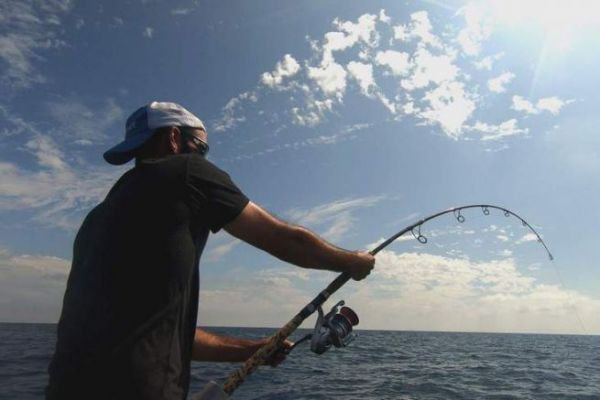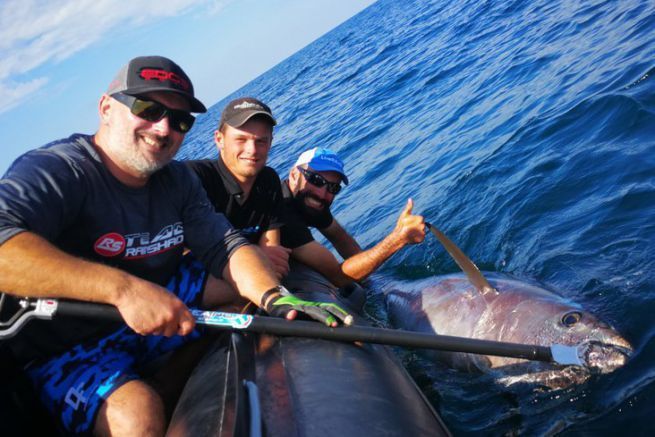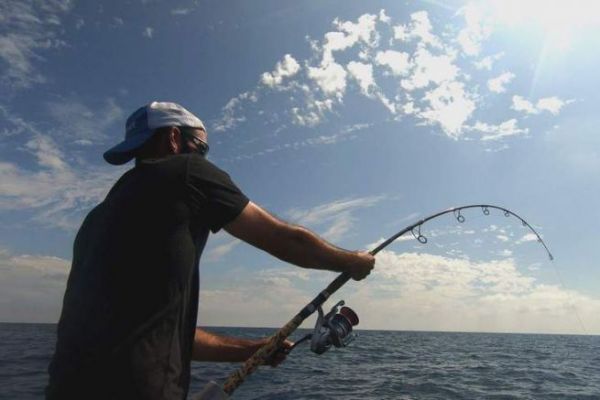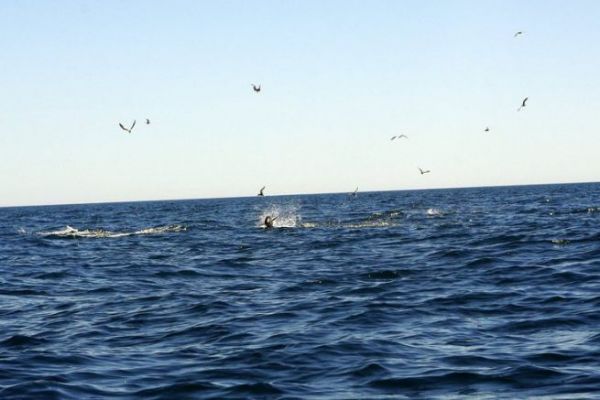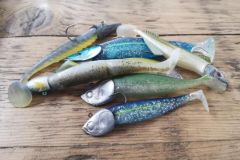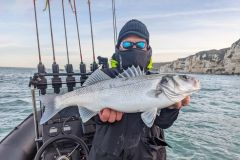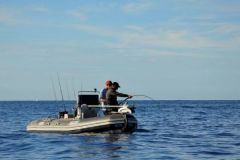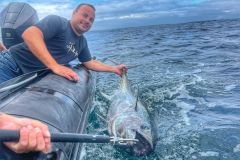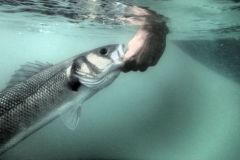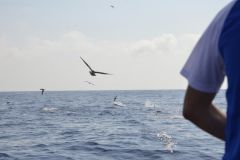Having seen in the previous article how to approach a hunt correctly now it's time for the animation of the lures and the fight, which will undoubtedly be long and difficult. Everyone on board will have an important role to play in defeating this giant, which can weigh over 250 kilos for the finest specimens.
Animation of lures
Once the hunt is within casting range, excitement is at its peak on board. But it's important to keep calm so as not to spoil everything. The mistake here would be to rush in and cast completely off the mark. Remember, if the hunt is very dense and made up of a lot of individuals, then opt for the outdoors. On the other hand, if it's a few individuals on the move, try to anticipate and present the decoy right in front of them.
As mentioned in the first article on equipment used for bluefin tuna lure fishing in the English Channel, 3 main types of lures are used, each with a specific animation:
- Poppers require long pulls, usually with a low rod so as not to draw them out of the water.
- The stickbaits I animate with a dry scion, varying the retrieve speed and doing a few poses.
- Soft lures, which are very effective in linear situations after allowing them to sink a few metres below the surface.
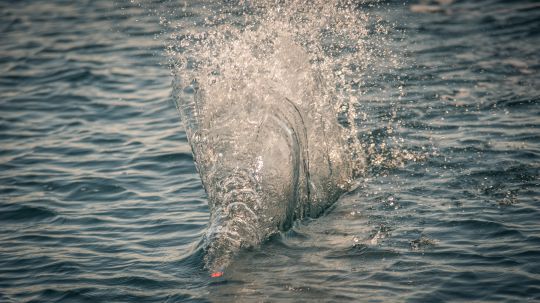
At the start of the season, poppers are very effective on active hunts and as the season progresses, I tend to vary and prospect the first few metres below the surface by opting for stickbaits or soft lures. It's often interesting to vary the types and sizes of lures when there are several anglers to target THE lure that's working that day.
Last but not least, remember that an area may appear to be totally calm, when seconds or minutes before it was euphoric. In such cases, poppers are capable of triggering attacks and completely waking up the area.
Managing combat
After the strike, a powerful hooking action is necessary to ensure that the hook is well inserted into the fish's mouth. This is followed by a violent rush during which it is virtually impossible to control the fish. Adjusting the drag is essential to avoid breakage.
The fish will soon find a comfortable depth and will do everything to stay there. That's when the showdown begins!
During the fight, the coxswain has a vital role to play, constantly maneuvering the boat to avoid the fish getting underneath, and as far as possible ensuring that the angler has the most upright position in relation to the fish.
The fun of this type of fishing lies in the team spirit, and during the fight everyone will have the opportunity to fight the fish a little by taking turns.
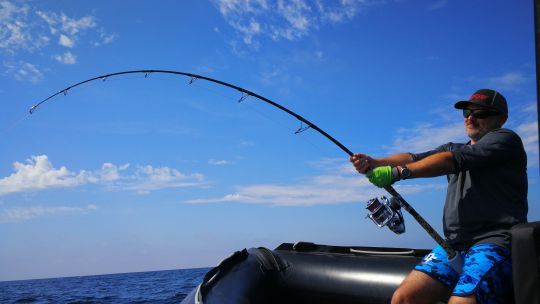
Releasing the fish
The arrival of the fish at the boat is for me the most critical stage. Torn between the desire to get it over with after a long fight, the excitement of seeing this magnificent fish break through the surface and the fact that the fish is not necessarily willing to surrender, it was during this manoeuvre that I recorded the highest number of breaks.
You have to take precautions and be prepared for a final rush from this giant of the seas which, if badly handled, will result in the immediate breaking of the line. To do this, I loosen my brake a little to manage this final rush as well as possible.
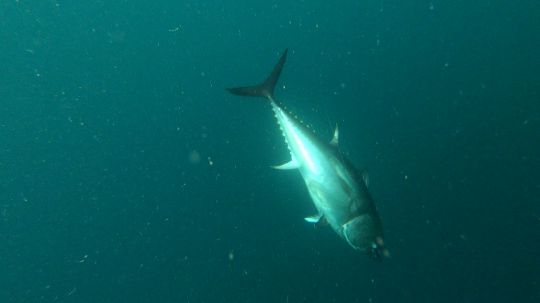
Once the poison is on the boat, grasp the shock leader firmly without ever circling your hand with it. A glove is obviously recommended for this step. So you understand the importance of using a large-diameter shock leader. I use Varivas 200 lbs.
As soon as possible, use the grey fish to control the fish. This step must be coordinated between the pilot, the angler and the person holding the fish grip.
I'd like to take this opportunity to remind you: never take a tuna out of the water for a photo! In addition to the difficulty of hauling it aboard, this fish constantly needs to swim to oxygenate itself. Only tuna destined to be preserved, and therefore banded, can be hauled aboard.
For my part, as soon as the fish is held by the fish grip, I engage the motor to create a current that ventilates it. Now we have time to take a few photos and recover the fish for release in the best possible conditions.
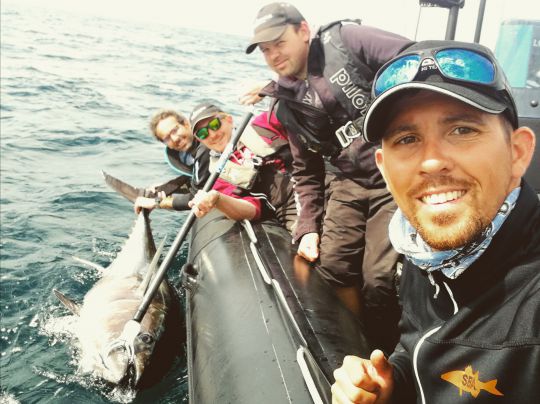
Tuna fishing is above all a human adventure, where team spirit is essential.
It requires a significant investment in equipment. It's worth using me to cut costs.
The fishing grounds are offshore, which means you need a safe boat to get there, with several people on board, and you also need deep-sea equipment.
